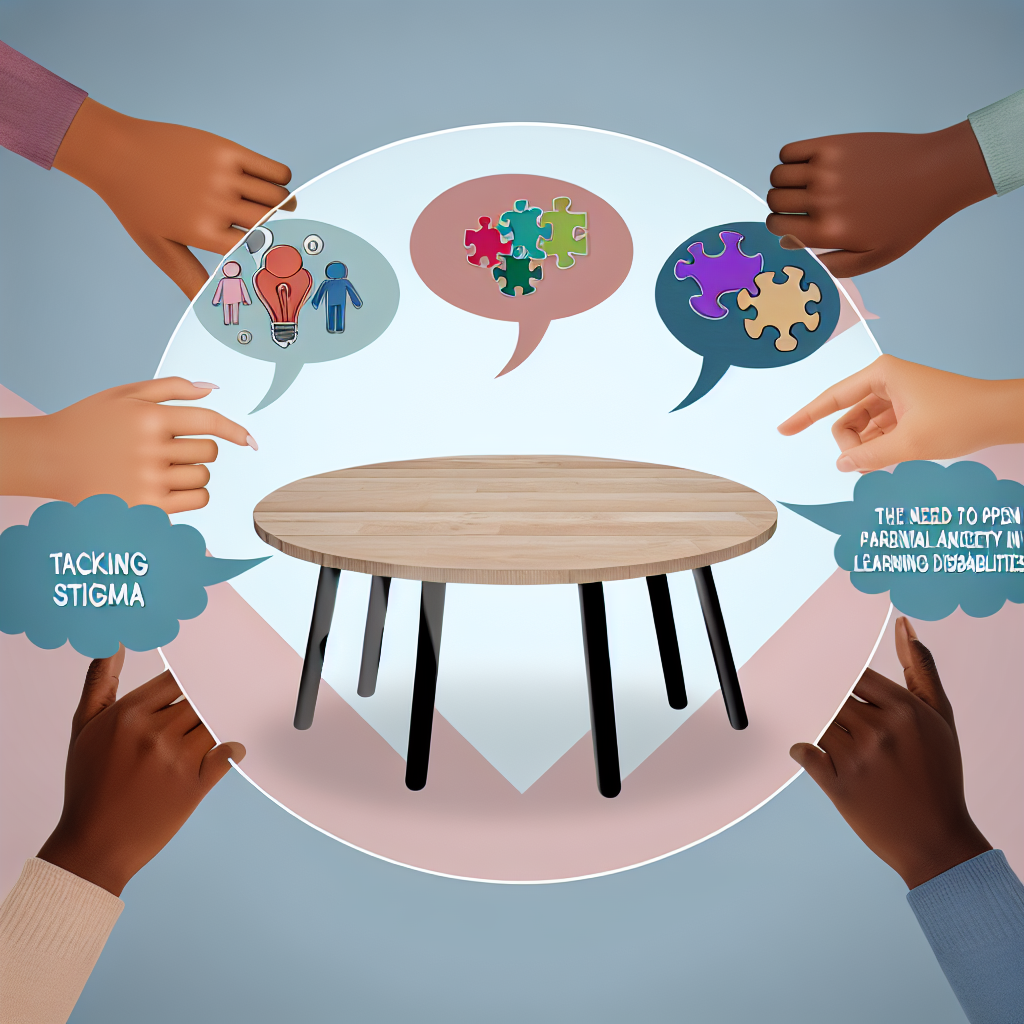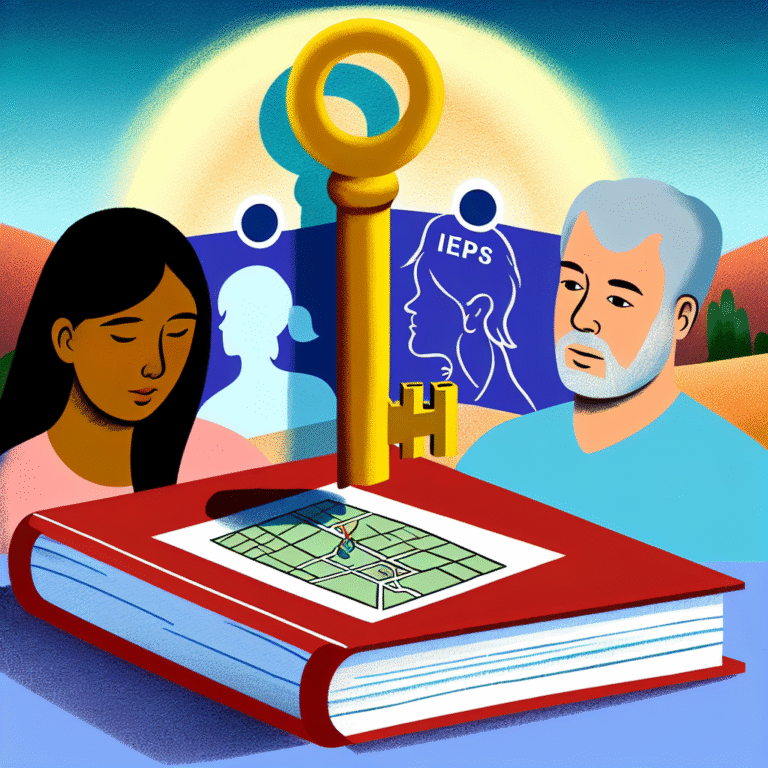
Tackling Stigma: The Essential Need for Open Conversations About Parental Anxiety in Learning Disabilities
Introduction: Shattering Silence
In a world where open dialogue is celebrated, one topic remains shrouded in stigma: parental anxiety surrounding learning disabilities. The mere mention of learning disabilities can evoke a spectrum of emotions—from fear and confusion to guilt and helplessness. This article delves into the critical need for addressing these emotions openly. Tackling Stigma: The Need for Open Conversations About Parental Anxiety in Learning Disabilities is not just a phrase; it encapsulates a movement aimed at reshaping the narrative around parenting, education, and mental health. Understanding and mitigating parental anxiety is essential for not only the well-being of parents but also for the children they strive to support.
The Weight of Stigma: Understanding Parental Anxiety
The Nature of Learning Disabilities
Learning disabilities (LDs) are neurological conditions that affect how individuals process information. According to the National Center for Learning Disabilities, one in five children experience learning disabilities, making it crucial to foster an environment where parental anxiety can be openly discussed. Parents often face an uphill battle when navigating school systems, understanding diagnoses, and accessing resources.
Common Sources of Parental Anxiety
- Fear of Misunderstanding: Parents worry that they might not fully grasp their child’s challenges or potential.
- Social Isolation: The feeling of being alone in their struggles can contribute to heightened anxiety.
- Pressure to Succeed: Parents may feel a societal pressure for their children to excel, leading to stress and anxiety.
- Stigmatization: There is often an inherent fear of being judged by others for their child’s difficulties.
The Consequences of Bottling It Up
The psychological toll of ignoring parental anxiety can reverberate beyond individuals, affecting families, schools, and even communities. Parents who do not engage in open conversations may inadvertently pass their anxiety onto their children, creating a cycle of fear and misunderstanding.
Case Studies That Illuminate the Challenges
To enrich our understanding, let’s examine some case studies that highlight the real-life implications of this stigma.
Case Study 1: Anna’s Journey
Anna, a mother of a child diagnosed with dyslexia, initially felt isolated and ashamed. She avoided discussing her child’s learning challenges with friends and family, fearing judgment. However, after attending a support group, Anna discovered the power of community. This allowed her to express her fears openly, leading to actionable insights on how to advocate for her child.
Analysis
Anna’s journey underscores the necessity of community support and open dialogue. The transition from silence to conversation not only alleviated her anxiety but also promoted a healthier family dynamic.
Case Study 2: David’s Advocacy
David is a father who took it upon himself to educate others about learning disabilities after his son’s diagnosis with ADHD. He organized workshops at his local community center focused on both parental anxiety and children’s needs.
Analysis
David’s proactive approach demonstrates the importance of education and advocacy. By tackling stigma head-on, he turned personal anxiety into community empowerment, fostering a space for open conversations.
Crafting a Supportive Environment: The Role of Communication
Creating Safe Spaces
Creating environments where parents can discuss their concerns without fear of judgment is crucial. Schools and community organizations can take steps to provide resources like counseling and workshops on learning disabilities and anxiety management.
Encouraging Open Dialogue
Having open conversations starts at home. Parents should feel encouraged to discuss their worries with their partners and children. Normalizing these discussions can lessen the stigma and pave the way for mutual understanding and support.
Strategies for Parents
- Seek Support Networks: Engaging with local or online communities can be incredibly reassuring.
- Educate Yourself: Understanding learning disabilities enables parents to advocate effectively for their children.
- Practice Self-Compassion: Recognize that feeling anxious is normal and valid.
The Importance of Language in Addressing Stigma
Changing the Narrative
Words hold power. Instead of labeling a child as “problematic,” it’s essential to use language that describes their challenges. For instance, instead of saying, “He struggles in school,” one might say, “He learns differently.” This subtle shift can change the entire perspective around learning disabilities.
Communication Techniques
Using "I" statements can foster open conversations. For example, “I feel anxious about my child’s schooling” shifts the focus from blame to personal experience. It opens doors for dialogue and understanding.
The Role of Educators and Professionals
Building Partnerships
Educators can play a critical role in facilitating open conversations between families and schools. Establishing a partnership based on empathy and understanding can help mitigate parents’ anxiety and promote collaborative problem-solving.
Training Staff
Incorporating training programs for educators can help them identify signs of anxiety in parents and recognize the importance of creating an open dialogue. Encouraging staff to be approachable and supportive can make a significant difference.
Data Insights: The Landscape of Parental Anxiety
Here’s a theoretical illustration showcasing statistics related to parental anxiety and learning disabilities:
| Statistic | Percentage |
|---|---|
| Parents experiencing anxiety about LDs | 70% |
| Parents discussing concerns with educators | 30% |
| Parents who feel socially isolated | 50% |
| Parents reporting improved mental health after joining support groups | 65% |
Conclusion: The Call for Action
Tackling Stigma: The Need for Open Conversations About Parental Anxiety in Learning Disabilities goes beyond mere discussion; it’s a call for action. By fostering environments that encourage dialogue, educating ourselves, and adopting empathetic language, we can reshape the narrative of learning disabilities. The time has come to embrace vulnerability, transforming anxiety into shared strength.
Motivational Takeaway
As we embrace these conversations, remember: every struggle shared is a step toward understanding. Allow yourself to feel, communicate, and advocate. Together, we can break down barriers and build a world that celebrates every child’s unique learning journey.
FAQs Section
1. What are learning disabilities?
Learning disabilities are neurological conditions that affect how individuals process information. They can impact reading, writing, math, and other areas of learning.
2. Why is parental anxiety often overlooked?
Parental anxiety around learning disabilities is often overshadowed by the immediate needs of the child. Stigma attached to mental health can also prevent parents from voicing their concerns.
3. How can parents find support?
Parents can find support through community groups, online forums, and counseling that focus on learning disabilities. Schools often provide resources as well.
4. What role do schools play in addressing parental anxiety?
Schools can create an open dialogue by training staff, offering workshops, and fostering partnerships with families to alleviate anxiety.
5. Can open conversations have an impact on children with learning disabilities?
Yes, open conversations can significantly affect a child’s emotional and academic well-being. They promote understanding and advocacy, empowering both the parent and child.
By taking these steps, we can collectively tackle the stigma surrounding parental anxiety in learning disabilities, creating a more supportive and understanding community for all involved.






